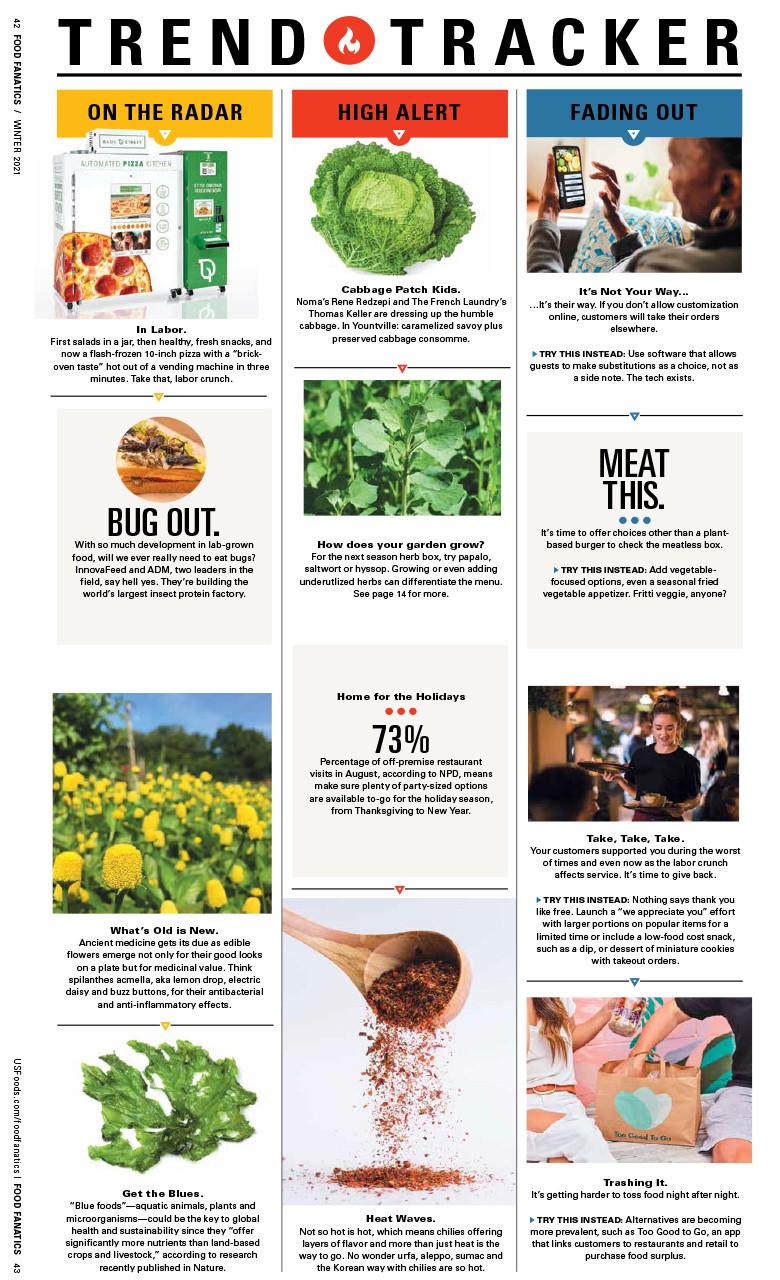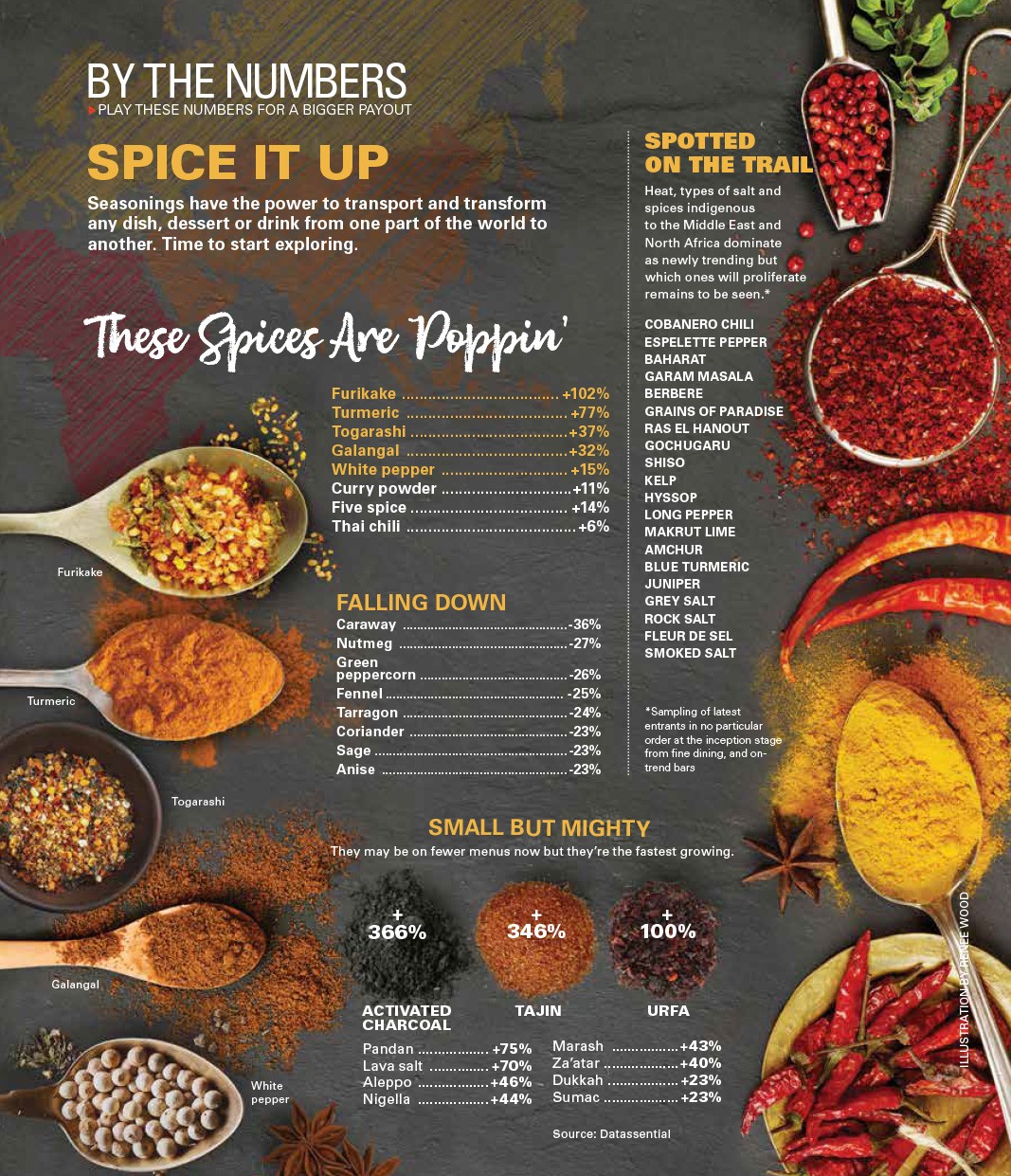All for One, One for All
How prix-fixe, family-style meals can pay off as a menu strategy
Family-style, set-price menus born out of the pandemic became a lifeline for independent restaurants.
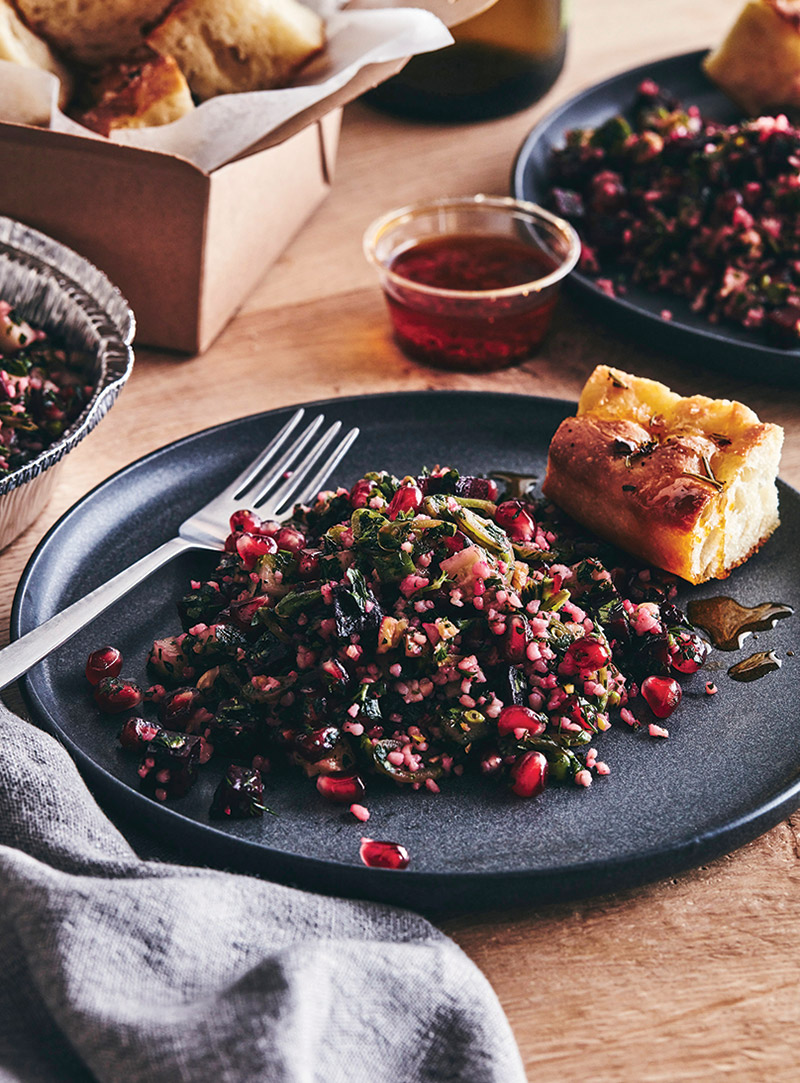
The model allowed for more predictability during an unpredictable time, controlling and reducing food costs, labor and waste. Success, however, hinged on balancing those variables with value. If customers felt they got their money’s worth for multiple dishes eaten on premise or to-go, they’d come back again – the operator’s Holy Grail.
“We have been able to really show what the Mama Meal experience is all about: Add on a nice bottle of Lebanese wine, and you have a similar experience to the restaurant, at home,” says chef Nicco Muratore of Mamnoon, a contemporary Middle Eastern restaurant in Seattle.
Operators who nailed it like Muratore see no reason to scrap the practice. They’ll determine whether the prix-fixe, family-style option continues to sell daily, or switch to its biggest performing nights. What they do know for certain is that there’s always room for a strategy that works for customers and the bottom line.
Here’s how Muratore and other operators make it work.
Recipes from this article:
MAMNOON, SEATTLE
APPROACH: Four shareable plates for two people ($40 total): seasonal salad, vegetarian or meat entrée, side dish, and labneh. A la carte items, including alcohol, are also available. Offered for in-person dining as well as to-go. Mama Meals can be preordered via Tock, or customers can call to order during dinner service. Meat entrées change daily, vegetarian entrées change once per week; some dishes recur on the same day every week (Thursdays are fried chicken, and shish taouk returns once a week).
FOOD COSTS: The goal is to keep them below 25%. Offering lower-priced proteins, such as chicken, helps. Proteins like lamb are limited to once per week, or the price may increase to $45. Oftentimes, the kitchen finds a way to stretch the more expensive protein. For example, when serving crispy lamb shawarma, Mamnoon portions 10 ounces of lamb for two people, but breading and frying “bulks it up,” according to Muratore, and makes it look more substantial. Proteins and other ingredients from a previous shift become seasonal salads or sandwiches on the next day’s menu. The kitchen chooses hardy vegetables like sunchokes, baby turnips, carrots and radishes, which can become seasonal salads or pickles.
BENEFITS AND CHALLENGES: Sides and salads are prepped in advance. All sides, salads and entrées are packaged for two people, which makes prep easy (no checking to see how many items per order); pickup times are staggered every 30 minutes, so the kitchen can assemble the next batch of proteins without getting overwhelmed. Muratore says the whole process is “really prep-heavy.”
BEST FOR: Any restaurant already offering small plates, Muratore says. Prep those into portions for two or four.
MENU HIGHLIGHTS: Harra fried chicken and crispy lamb shawarma (braised lamb shoulder pressed overnight and deep fried).
CHILAM BALAM, CHICAGO
APPROACH: Family-style, four-dish menu available to-go for $35 per person, which includes a starter (such as guacamole or posole), salad or vegetable (such as a green salad, esquites or Brussels sprouts), main dish (meat, vegetarian, vegan choices – recent hits have included carnitas with rice and beans; brisket mole de olla; carnitas tamales), and dessert. It must be ordered at least an hour in advance. Menu changes weekly. Additional add-ons include margarita and sangria mixes.
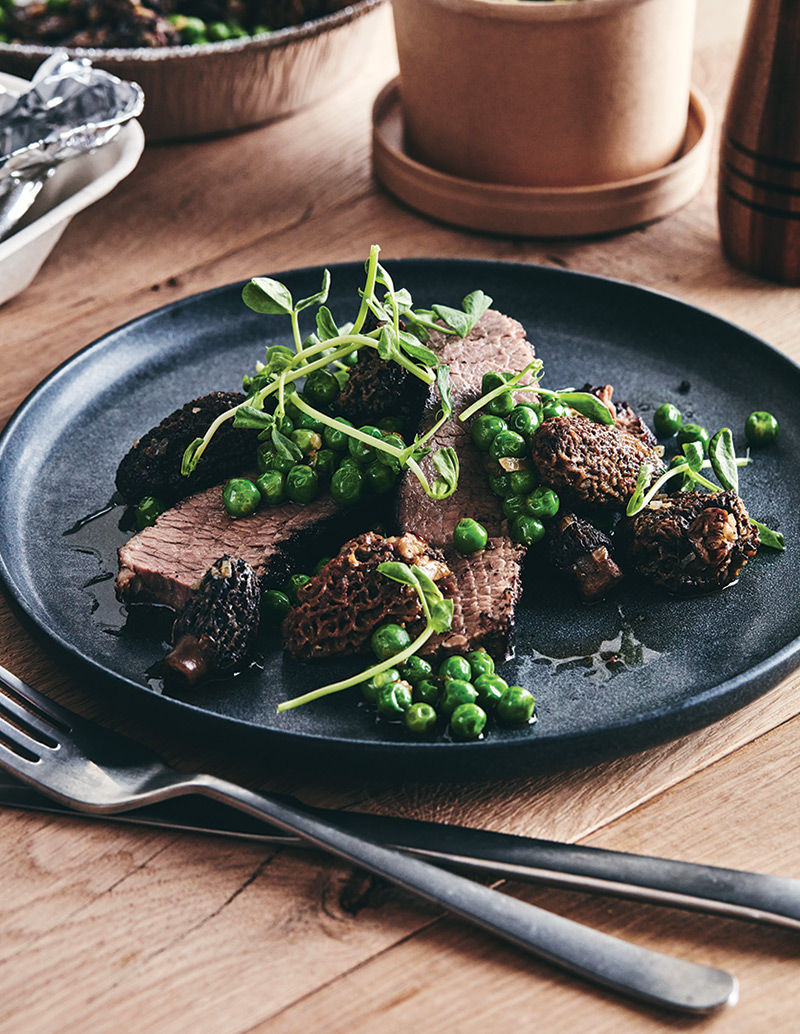
FOOD COSTS: Keeping a tight menu helps owner Soraya Rendon control food costs. One menu is offered per week, and the only choices are meat, vegetarian or vegan dishes. This means the kitchen is generally prepping only one type of meat entrée, so the kitchen can choose a meat on sale or offered at a good price. The restaurant is also conservative with estimating demand. It’s better to sell out than have extras, Rendon advises.
BENEFITS AND CHALLENGES: Currently, only Rendon and chef Natalie Oswold are working, handling all duties to control labor costs. Guests are asked to bring their own containers for margarita and sangria mixes. Anticipating demand week to week is a challenge. Rendon is using last week’s sales to estimate orders for the following week, but says there’s still great variation in traffic depending on weather, and if other restaurants are open for in-person dining.
BEST FOR: Restaurants with a regular customer base willing to return every week for a new menu, as well as restaurants that don’t cater to many guests with dietary restrictions.
MENU HIGHLIGHTS: Carnitas with beans and rice, posole, esquites, peanut butter and Oaxacan chocolate mousse cake.
DRIFTHOUSE BY DAVID BURKE: SEA BRIGHT, NEW JERSEY
APPROACH: Sunday Suppa menu is available Sundays, dine-in only. The three-course menu is $45 per person and includes two starters, two entrées (usually a protein and a pasta) and one dessert. Additional courses are $12. Sides are available a la carte. Upgrades (for filet mignon or lobster) cost $20 to $24. Menu changes monthly.
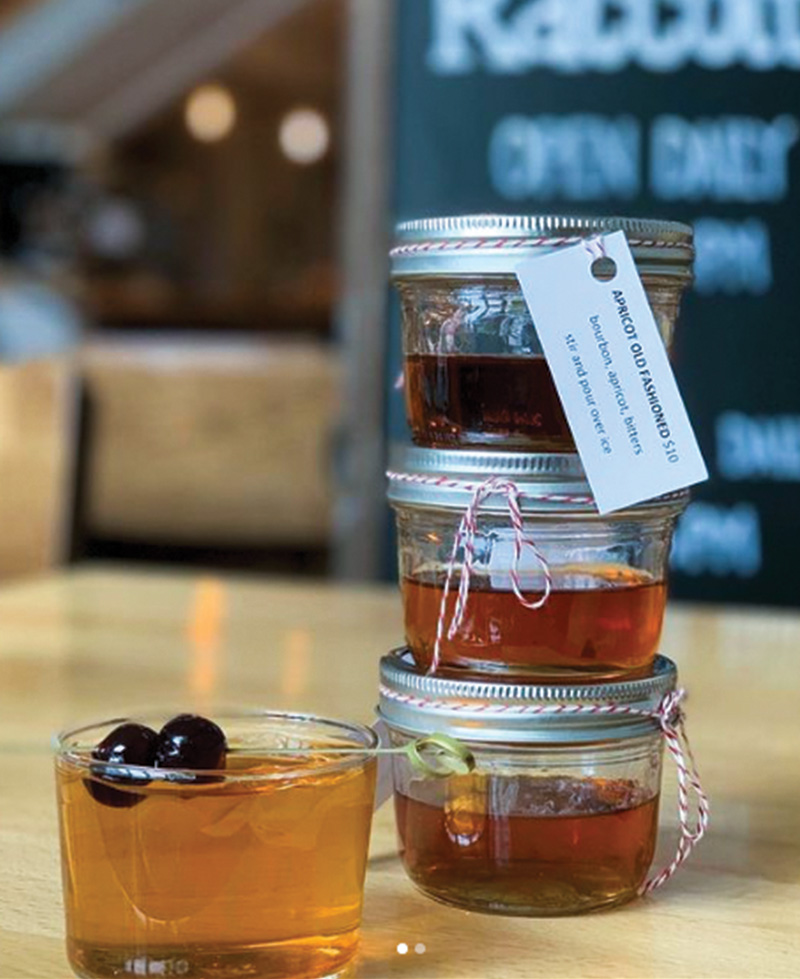
FOOD COSTS: “It’s really all about the upsell,” says Carmine Di Giovanni, corporate chef and partner. Lobster and dry-aged beef are popular upsell choices, as well as focaccia with Calabrian chili oil. “There are also tons of benefits as far as utilizing some product in the box,” because it’s served on Sundays – maybe there’s salmon or branzino left over from Saturday service; either could become the market fish on the Sunday Suppa menu. “It’s a very price-point driven menu.” Wines are specially priced at $30 but higher-priced ones are also promoted, as well as more expensive entrées and additional a la carte sides.
BENEFITS AND CHALLENGES: Labor savings are significant because instead of prepping four entrées, a cook can prep a single, large dish. Because guests are happy about returning to restaurants, they tend to linger and order more wine or cocktails.
BEST FOR: Applicable to almost any style of cuisine, says Di Giovanni. It harkens back to the “beefsteak dinner” of decades past, with large roasts and vegetable platters served to a table family-style. He’s seen a resurgence of guests looking for that communal experience, and they’re more willing to accept limited menus during this time.
MENU HIGHLIGHTS: Wood-fired pork chop, Sunday fish specials and housemade burrata.
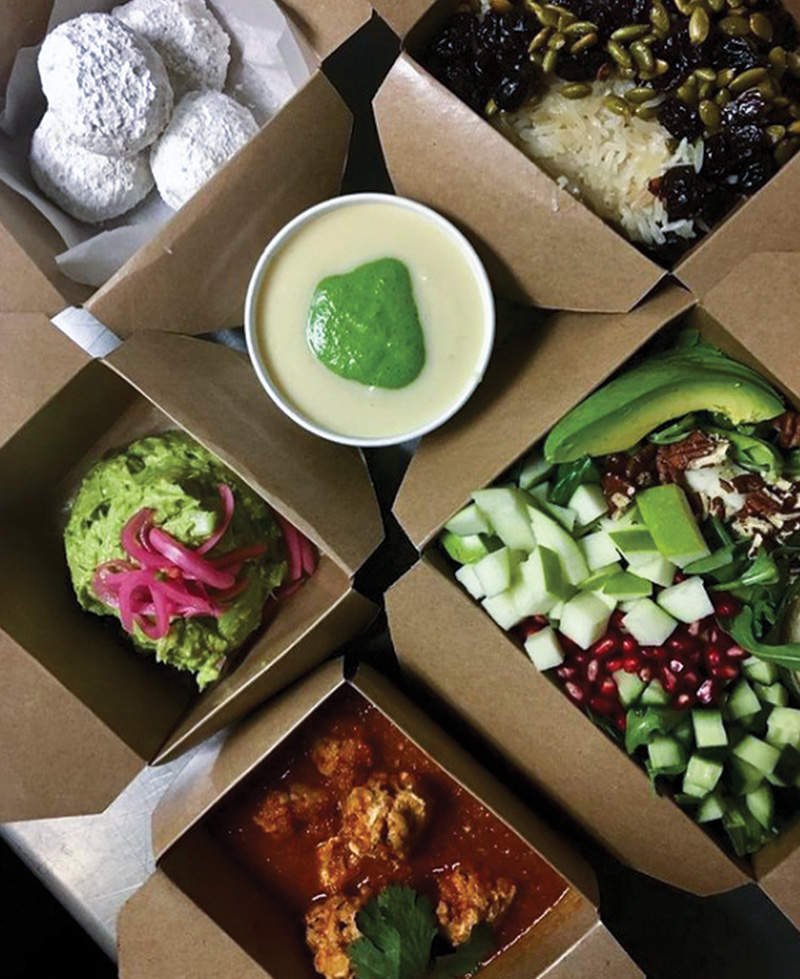
RACCOLTO, SEATTLE
APPROACH: Chef’s tasting menu to-go offers guests a choice of a starter, pasta and protein plus dessert at $28 per person. A family meal for two is offered at a fixed price, which varies (it recently featured brisket with marble potatoes, salsa rossa, Brussels sprouts and Calabrian chili for $30 per person). Other family meal entrées have included prime rib and miso-marinated black cod. Menus change daily or near-daily.
FOOD COSTS: “We want to get by, pay our bills, keep people employed safely, and the only way I think we can do that and feel good is by offering a ton of value,” says owner and executive chef Brian Clevenger, noting that his food costs are perhaps “a little high” right now. Quality ingredients and fair portions are part of what makes Raccolto’s (and his other restaurants’) family meals popular. “Volume cures everything, it allows your food cost to be higher.”

BENEFITS AND CHALLENGES: Besides controlling food costs, pivoting from a dine-in to a takeout menu was a challenge. “Our food historically hasn’t traveled well,” Clevenger says. “That was a bit of humble pie for me: Start cooking food that people want to-go.” He made small tweaks, like changing pasta sauces so they’re not emulsified a la minute, choosing thicker pasta shapes that hold their chew, and subbing in hardier greens that don’t wilt in transit. He also introduced new dishes, like Nashville hot fried chicken, that the restaurant never would have served before the pandemic. Labor savings also are a benefit: Because the family-style dishes are so prep-heavy, kitchen staff arrives an hour earlier than they had pre-COVID-19, but they’re able to leave two hours earlier.
BEST FOR: Slightly higher-end operations. Clevenger says the to-go tasting menu was a logical way to extend the restaurant’s in-person tasting menu, with aforementioned modifications that make it travel more easily. It gives a special occasion feel to customers looking for something more elevated than standard takeout offers.
MENU HIGHLIGHTS: Nashville hot fried chicken, fresh pasta and prime rib.


